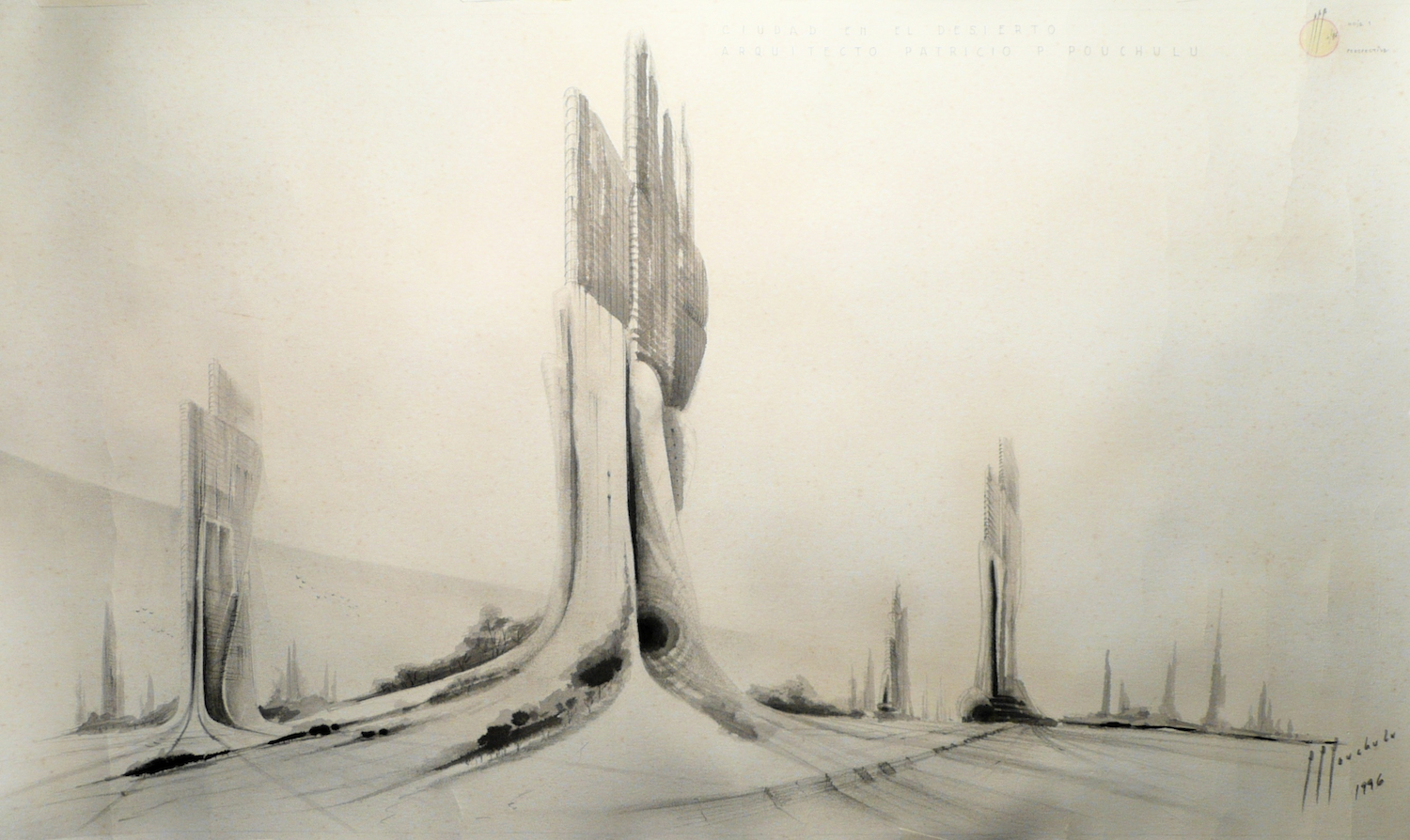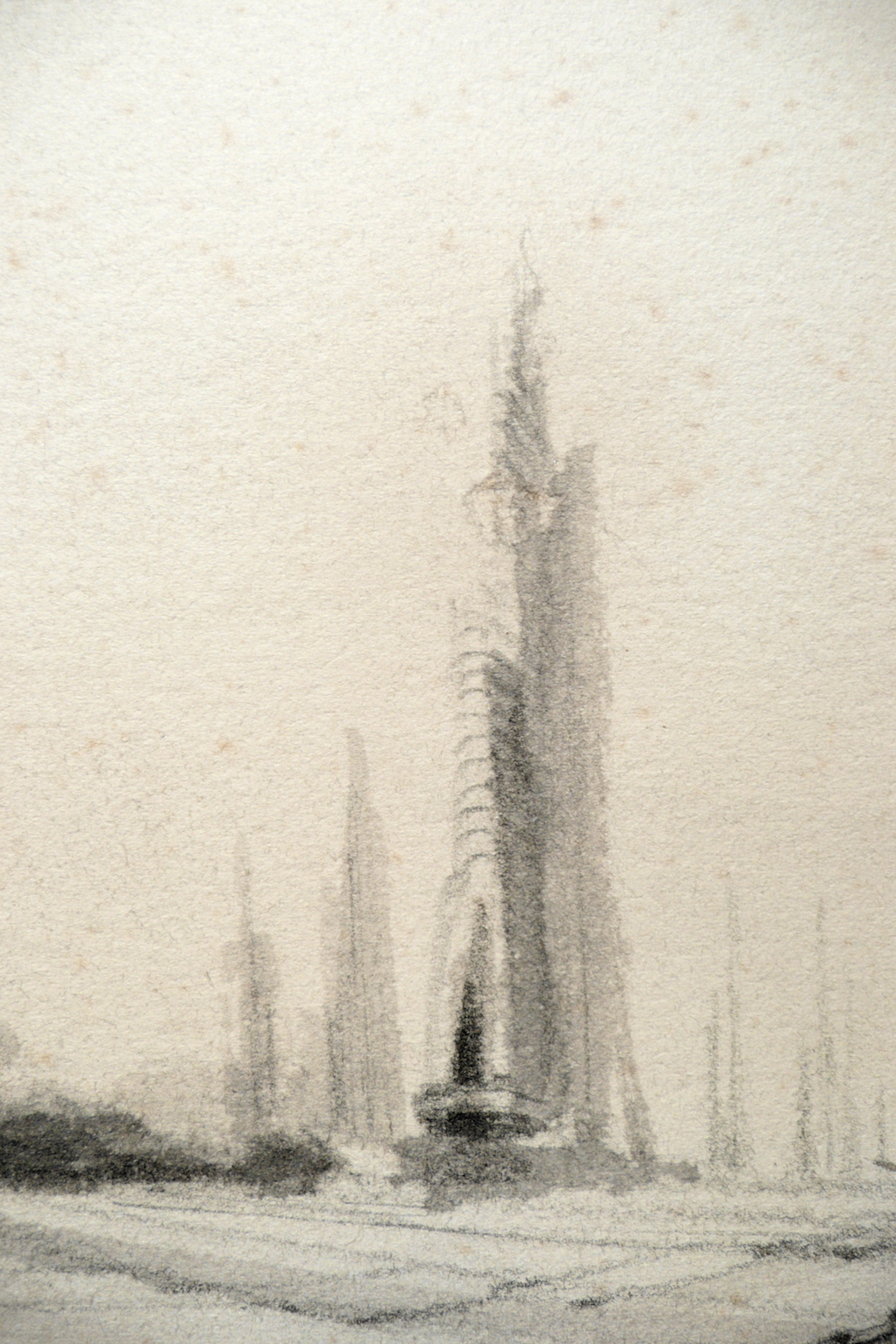
Index 1 - 2 - 3 - 4- 5 - 6 - 7 - 8 - 9 - 10 - 11 - 12 - 13 - 14 - 15 - 16 - 17 -- --
4 - Survival Cities
We will create small, autonomous, self-re-balanced cities that will harvest crops and produce meat, exploiting and protecting sustainable forests. These cities will create minimum clean energy using not only solar and wind power, but water and gravity. Pollution by transportation will be reduced to the minimum. A smaller number of industrial goods produced abroad will cross the world on wind powered trans-oceanic cargo boats: sailing vessels will be back. On land, only light electric trains will be allowed, and 100% green small lorries for inner-city transportation. In places where temperature will raise beyond bearable, underground facilities will be needed. This new cities must re-instate safe known analog technologies for educating: it is proved that blackboard and chalk stimulates children's attention and creativity by co-ordination of mind, arms and hands, inter-acting with other students within a real room; digital communication will be only complementary of real-workshop training. We will re-activate proved old technologies that promote the arts, observing, printing, building, in harmony with what's left of nature. There are good signs in This means a functional return, rather than organisational, to "burgus" (commercial cities) from the early Renaissance, where empirical capitalism enriched all classes and where freedom and law were the path, without speculation and frantic consumerism. These new cities are "communi" ("communitas" in Latin: to share a space), independent organisms living together (in a biological sense), and "common", a piece of open space for public (in the British law sense). People will agree to protect nature and exploit it rationally. I propose a combination of pre-industrialisation patterns with limited electronic technology (not applied into habitat or mobility unless absolutely necessary, but mainly in scientific and industrial research and applications, like medicine). In day-to-day living, our extensions, in the anthropological sense -machines, tools, devices- will be mostly analog, affordable, recyclable and reasonable slow. We only need speed for space exploration... and for our thoughts.

Proyecto de Ciudad en el Desierto / Project for a City in the Desert, Patagonia, Argentina, 1996. Original drawing by Pouchulu. Pencil, gouache and black ink on aquarelle Canson.
The picture above is Pouchulu's Proyecto de Ciudad en el Desierto / Project for a City in the Desert, Patagonia, Argentina, from 1996. A series of scattered inhabited towers, which resist the fierce winds from Antarctic, are connected underground. The basements include commercial, educational and sport facilities, semi-underground intensive agriculture and water reservoirs at the top. The structures, erected in an area a few hundred metres high, are also dramatically waiting for future sea level rise.

Idem, detail of North-East factory, water reservoir and wind power towers.
This architectonical exploration intends to question till which point we are directing our research in the right perspective. In this case, several hypotheses have been set. It seems that within one hundred years sea level will change. It is unclear if Greenland and the South Pole will finally melt, totally or partially, it might be something in between, but the facts point that the melting will be total; it is also uncertain where the sea will rise and where will recede and descent: it has been noticed recently (2017) that the oceans are so heavy that they influence the balance of Earth's rotation, they are large enough to interact and its distribution responds to an extremely complex mathematical model, which is still under study. It has been pointed that the Earth is not a perfect sphere but a slightly "pear shape" object, wider in the Southern Hemisphere. Satellite measurements, for this particular issue, proved rather useless, because the complexity of fixing a non-regular geometrical pattern reference (the Earth as a sphere) is obliging to use unorthodox mapping methods. Satellite's orbits are assumed regular and we managed to control them by a real time self-adjustment data, controlled by its height respect the surface of the Earth, "whatever" profile our sphere has. This imperfection forces mathematicians to try odd calculus and is still in progress. It seems that, compared with the actual sea level, part of the ocean could go up between 30 and 70 metres mostly but not only around mid-high and low latitudes, but in other parts of the globe it will go down between 20 and 30 metres. The weight of the continents (Crest, in geological terms) is linked with the ocean's weight, and the ice in Antarctic; after this weight is gone there, earthquakes are expected, because west Antarctic is the continuation of the Andes fault, where Pacific and Atlantic clash. The up and down sea level evolution could explain why there are ancient cities buried underwater at more than ten or even thirty metres deep, in odd places in the middle East, Greece, Mediterranean, and parts of Asia: not just as a consequence of Earth tremors, but also because the sea level has been changing during ice ages (particularly noticed in the last one, 10 thousands years ago¹, because once the polar ice caps was gone the sea level was distributed differently in order to re-balance the weight lost on the poles, according to complex geological and mechanisms present in our planet which we are far to understand. This is astronomical mathematics, with no single expert able (yet) to determine the effects of it. It is not really important to assess the origin of the actual melting of glaciers and poles: it is logical to think is mostly produced by the last solar cycles, plus man-made global warming. The thing is, as architects, we have the obligation to alert in one way or another that sea level will change, sooner or later. The extreme floods experienced in several regions in all continents in the last fifteen years can be explained because of the visible increase of severe storms, not because of sea level rise as stated in the news; this is happening close to the coast, thanks to tropical heavy rain but now in template or even cold areas, not only in summer but in autumn and spring. It is imperative to understand that it is pointless to reconstruct ordinary houses "a bit higher": in places like north of Argentina, South of Brazil, in the valleys of Germany, Austria and France (around the Alps); in some locations the rain has been so severe at the end of spring and summer, particularly in places like Chaco, Argentina, or Santa Catarina do Sul, Brazil, that reconstructing damage year after year one or two metres higher proved totally ineffective: more rains continued to flood cities and towns up to eight metres of water, for a few days. Floating structures are needed if these people want to continue with their lives in the place they grew up; if not they will have to move to a higher land, far from rivers. The problem is that 97% of world population, for obvious reasons, live close to rivers, lakes or the sea. Water is the main vital element for humans and animals; it is time to revisit where and how we will survive the incoming Habitat catastrophe. Rather than escaping from floods or the brave sea, it will be better to learn from it, and live with it, particularly if in some cases these floods will not be permanent. If we do not proceed this way, massive migrations will occur within the next few years; actually, it already started, not only produced by wars or overpopulation; we are getting used to watching migration news every day of "only" hundreds or thousands and it seems it does not call our attention.
When we face extreme weather events far from the ocean -from 200 kilometres and more, and providing we are at least 100 metres above sea level- we face a different challenge: temperature. In a hot temperature scenario, more than in a cold one, there is a relatively simple solution: to develop underground cities, partially or totally, depending on the evolution of the events. Indeed, to excavate is very expensive and disruptive; however, some countries like Switzerland, Germany, the US and Russia have extensive experience in underground refuges: they built millions of underground square metres during the Cold War and there are indications that they still do, for many reasons, not only a possible nuclear war, but probably anticipating a space clashing event, like a celestial body. Nearly half a million people are ready to escape to refuges in case of a nuclear catastrophe, sudden climate event or astronomical event (meteorite). Unfortunately, only preppers are taking this issue seriously, apart from the government that, according to confidential information, secretly invest billions of dollars every year to maintain the infrastructure. It is expected that only a selected group of leaders and service groups will move there, if necessary. Beyond conspiracy theories, our topic deals with a long-term project, on how to anticipate some of those events, particularly the Habitat Change phenomenon in progress, to alert individuals that they have to start taking this issue seriously. Compared with the complexities of building underground cities, a more feasible option is to build domes or half domes in higher altitudes. Domes have many advantages, their structures offer full protection against a reasonable range of climate events, even sudden one likes hurricanes or tornados, and one disadvantage, they require a complex air circulation and renovation system. This could be solved if we face a larger inner space, but if the temperature differences compared with the exterior are too high and the surface or the exterior cannot be reached but occasionally, growing vegetables, fruits and producing meat will be a challenge; then those domes will have to follow a mini Circular Economy system (recycling everything following a closed loop); at the moment the technical limitations are extreme, particularly for large number of occupants. NASA is working on this. A dome space for up to fifty people can be solved with a relatively simple structure, but another thing is to imagine a series of domes for thousand of people or more; not just structurally but a whole service management is needed and represents a challenge; on the other hand, from a functional point of view, a series of routines, tasks, strictly hierarchy organised will dictate people's life; no much space for free time. Beyond small communities, in a larger scale only the army can handle such tasks in effective ways.
¹ The Pleistocene epoch lasted from 1,650,000 to 10,000 years ago. It had great fluctuations in temperature that caused the Ice Ages, with glacial periods followed by warmer interglacial periods. Several extinct forms of human, forerunners of modern humans belong to this time.
Go to the next chapter, here.
1 - 2 - 3 - 4- 5 - 6 - 7 - 8 - 9 - 10 - 11 - 12 - 13 - 14 - 15 - 16 - 17 -- --
Background photo: planet Mars, dust storm, PIA15959, Mars Reconnaissance Orbiter (MRO), courtesy of NASA
up mainCopyright © 2001-2020 Patricio Pouchulu architect